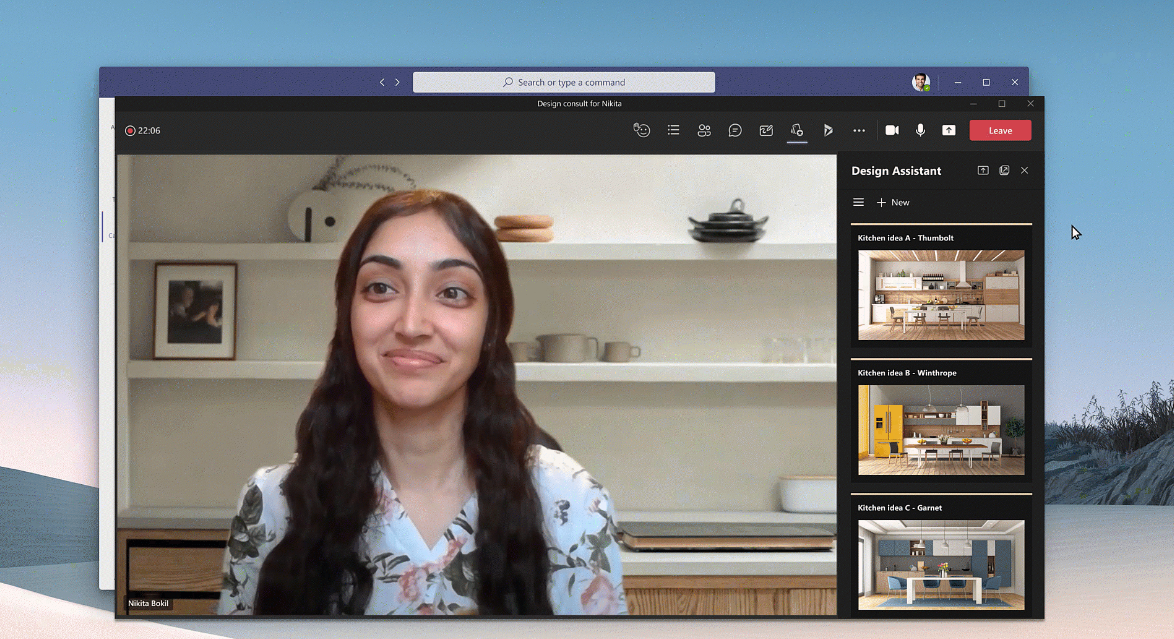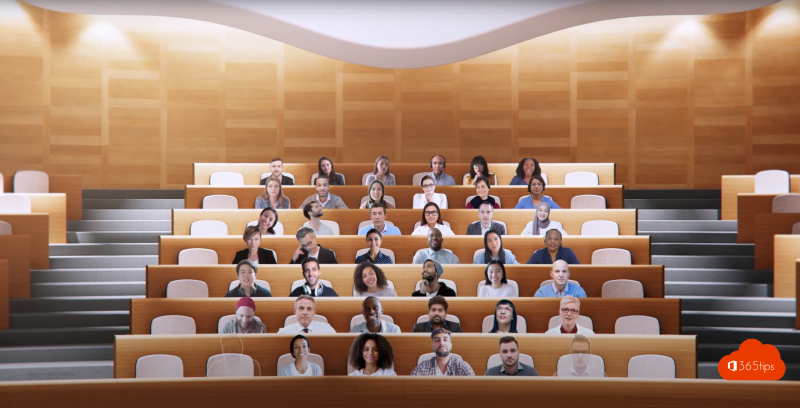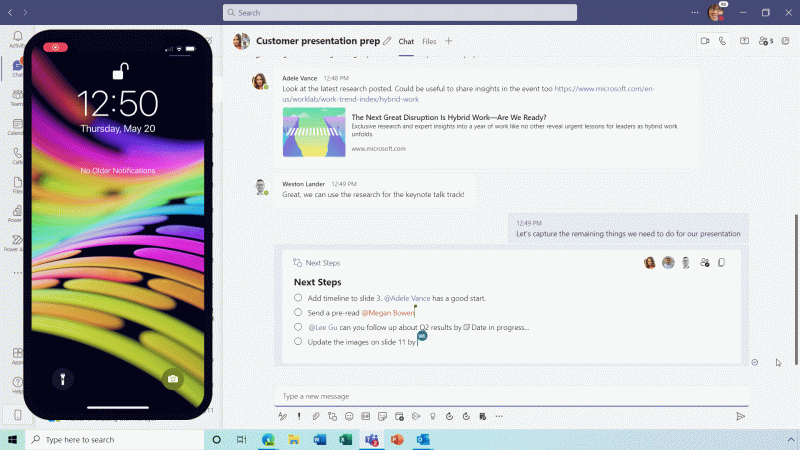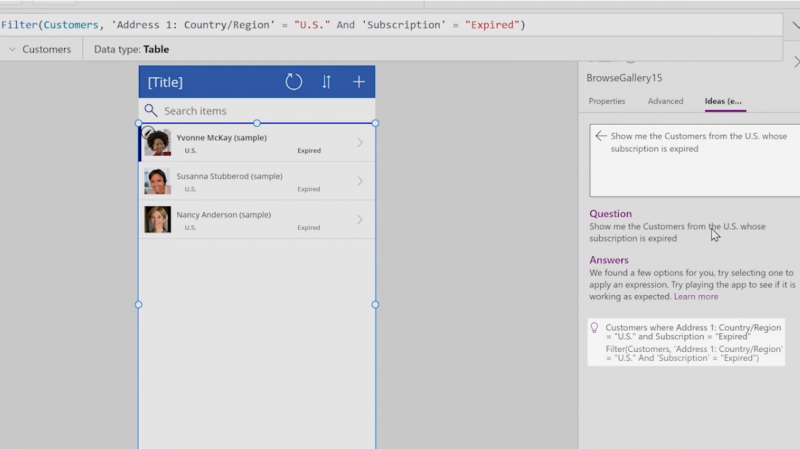 APPS
APPS
 APPS
APPS
 APPS
APPS
Microsoft Corp. announced new features and tools for developers to integrate services within its Teams collaboration platform today as it kicked off its virtual Build 2021 developer conference.
The software and cloud giant also provided a brief glimpse of what’s coming “very soon” in its iconic Windows software. Microsoft Chief Executive Satya Nadella revealed a major update will be coming to the platform in the near future. His comment implies that we could be about to see some of the biggest changes since the introduction of Windows 10 itself.
“Soon we will share one of the most significant updates to Windows of the past decade to unlock greater economic opportunity for developers and creators,” Nadella said during his Build keynote. “I’ve been self-hosting it over the past several months, and I’m incredibly excited about the next generation of Windows. Our promise to you is this: We will create more opportunity for every Windows developer today and welcome every creator who is looking for the most innovative, new, open platform to build and distribute and monetize applications.”
As for Teams, Microsoft has been pushing the platform as its main hub for employees to get things done, so of course it means developers want to get their services there too. Now, the company is helping them do that with some new updates that enable better experiences to be built within Teams.
The updates will make it possible for developers to build apps that plug directly into the Teams meeting canvas, including ones that use in-app purchases or subscriptions. It means applications built for Teams will be able to run across any platform, be it Windows, Mac, the web, Android, iOS or Linux. It will also be possible to create separate applications that can access Team’s video and audio streams in real time.
The most important update announced today might be the enhanced Microsoft Teams Toolkit for Visual Studio and Visual Studio Code. The toolkit now supports various frameworks and developer tools such as Reach, SharePoint and .NET, and integrates with Azure Functions, SharePoint Framework and Microsoft Graph. According to the company, it will help developers to build apps for teams faster and more easily, with more flexibility, all from one place.
A second update involves Microsoft’s Together Mode for Teams (pictured below), which uses artificial intelligence to segment people’s face and shoulders and place them with their co-workers in a virtual space. That feature is now being opened up to developers so they can create their own Together Mode scenes, Microsoft said.

The preview of shared stage integration meanwhile will help developers to build real-time, multi-user collaboration experiences by extending the “main stage” of a Teams meeting. It makes it possible to add an app to the Teams meeting, such as a whiteboard or project board, and immediately share it with all other participants to enable “in-the-moment collaboration,” Microsoft said.
Later in the summer, Microsoft said it will enable third-party apps to access Team’s real-time video and audio streams. The company said examples that could benefit include apps that tap into those streams for transcription or note-taking.
Further, the company is planning to let developers sell subscriptions and in-app purchases for their apps, directly within Teams.
Staying with enabling people to work together better in real time, Microsoft announced that fluid components within Teams are now in private preview. The fluid components can be shared across Teams and various Office apps. So, for example, someone could send a message with a table in Teams chat that can be edited by anyone who receives it.
Fluid components are all about getting work done more efficiently. “With Fluid components users can ideate, create, and decide together, while holding fewer meetings and minimizing the need for long chat threads,” the company said in a blog post.

Another Teams-related update was the launch of Universal Actions for Adaptive Cards, which use the Azure Bot Framework to create adaptive cards that work across Teams and Outlook’s desktop and mobile clients. Adaptive Cards are an open card exchange format developers use to exchange user interface content in a common and consistent way.
The updates suggest that Microsoft wants developers to see Teams as a viable platform to host their own services. What with the platform said to have more than 145 million daily active users now, it could offer developers a potentially lucrative way to get their apps and services in front of new enterprise audiences.
“Microsoft is entering chapter two of Teams in the enterprise,” said Constellation Research Inc. analyst Holger Mueller. “While the first chapter was all about getting market share and keeping competitors out, now Microsoft is focusing on building out the ecosystem and activating developers. Tools like the fluid components and adaptive cards will ensure a more consistent user experience across Microsoft products and should go down well with developers.”
Microsoft’s announcements at Build 2021 extend far beyond the Teams platform. Another big focus for the company is artificial intelligence. The company wants developers to consider building their AI applications on top of its Azure cloud, and to try to convince them to do so, it’s stepping up its support for the PyTorch deep learning framework.
PyTorch is a popular library for the Python programming language that’s used for writing AI and machine learning apps, and it has been widely adopted at Microsoft for its own internal AI work. The company said today it’s rolling out PyTorch Enterprise on Azure, which means it will provide Premier and Unified support for customers that bring benefits such as prioritized requests, hands-on support and rapid hot fixes, bugs and security patches. The idea, Microsoft said, is to provide a more reliable user experience.
Another interesting update is that Microsoft is bringing more AI to its low-code programming language PowerFx, enabling the use of natural language input and “programming by example” when building new PowerApps.
The company said it’s using the Generative Pre-trained Transformer 3, or GPT-3, and Program Synthesis Using Examples or PROSE software development kits to do this. GPT-3 is a widely used natural-language model built by the OpenAI organization, while PROSE is a technology developed by Microsoft Research that’s already used in Power BI, Excel and Visual Studio.
By integrating GPT-3 with PowerFx, Microsoft said, citizen developers will be able to develop new applications in “plain English,” without using any code at all. Previously, the Microsoft Power Platform required users to understand the basic logic of writing formulas, but not anymore. Now, they can just type a command such as “Show 10 orders with a certain product in the name and arranged from newest to oldest purchase” and get exactly the same result.

Another highlight for developers is that Microsoft has made its OpenJDK, an open-source version of the Java development kit, generally available for all users.
The release comes after a preview of OpenJDK was announced in April. Microsoft said today’s version is a long-term support distribution that will help developers to write applications in the Java programming language.
Coming soon, meanwhile, is Microsoft’s long-promised support for Linux graphical user interface apps on Windows 10. The company has released a preview of Linux GUI apps on Windows Subsystem for Linux for Windows Insider testers. It will allow developers to run their preferred Linux tools, utilities and apps directly on Windows 10 for the first time, without needing to set up a virtual machine first.
Support our mission to keep content open and free by engaging with theCUBE community. Join theCUBE’s Alumni Trust Network, where technology leaders connect, share intelligence and create opportunities.
Founded by tech visionaries John Furrier and Dave Vellante, SiliconANGLE Media has built a dynamic ecosystem of industry-leading digital media brands that reach 15+ million elite tech professionals. Our new proprietary theCUBE AI Video Cloud is breaking ground in audience interaction, leveraging theCUBEai.com neural network to help technology companies make data-driven decisions and stay at the forefront of industry conversations.